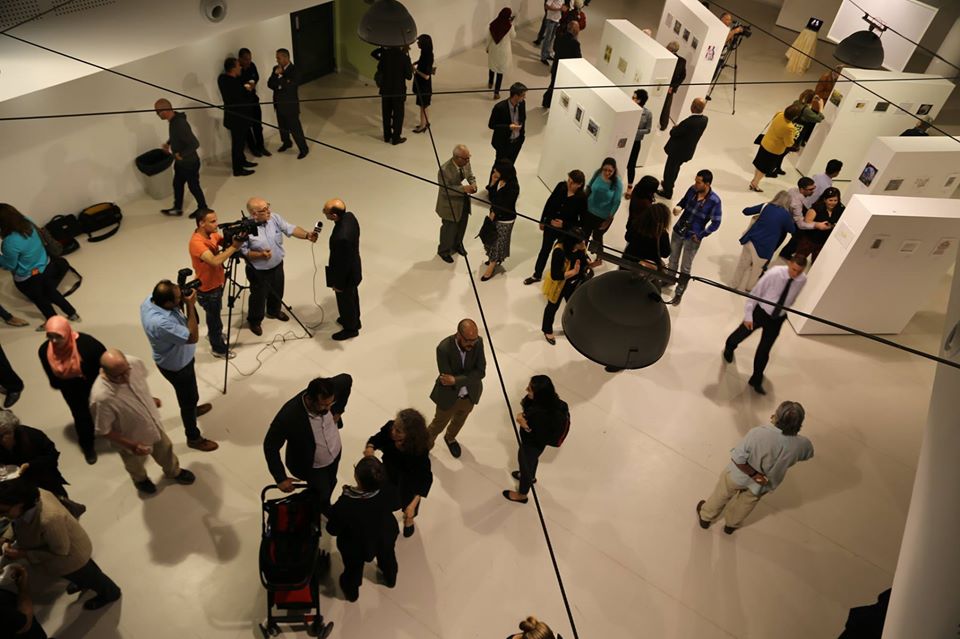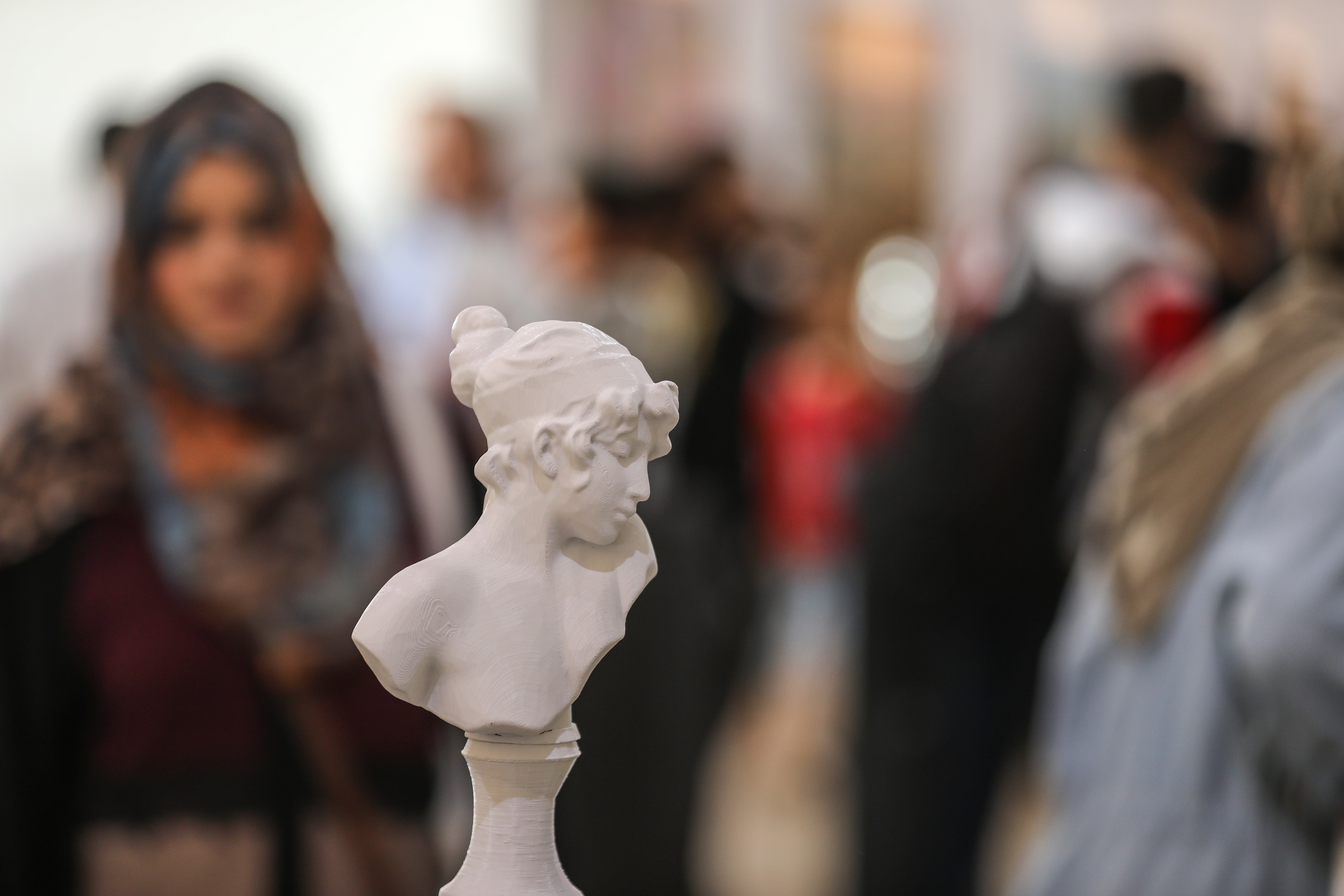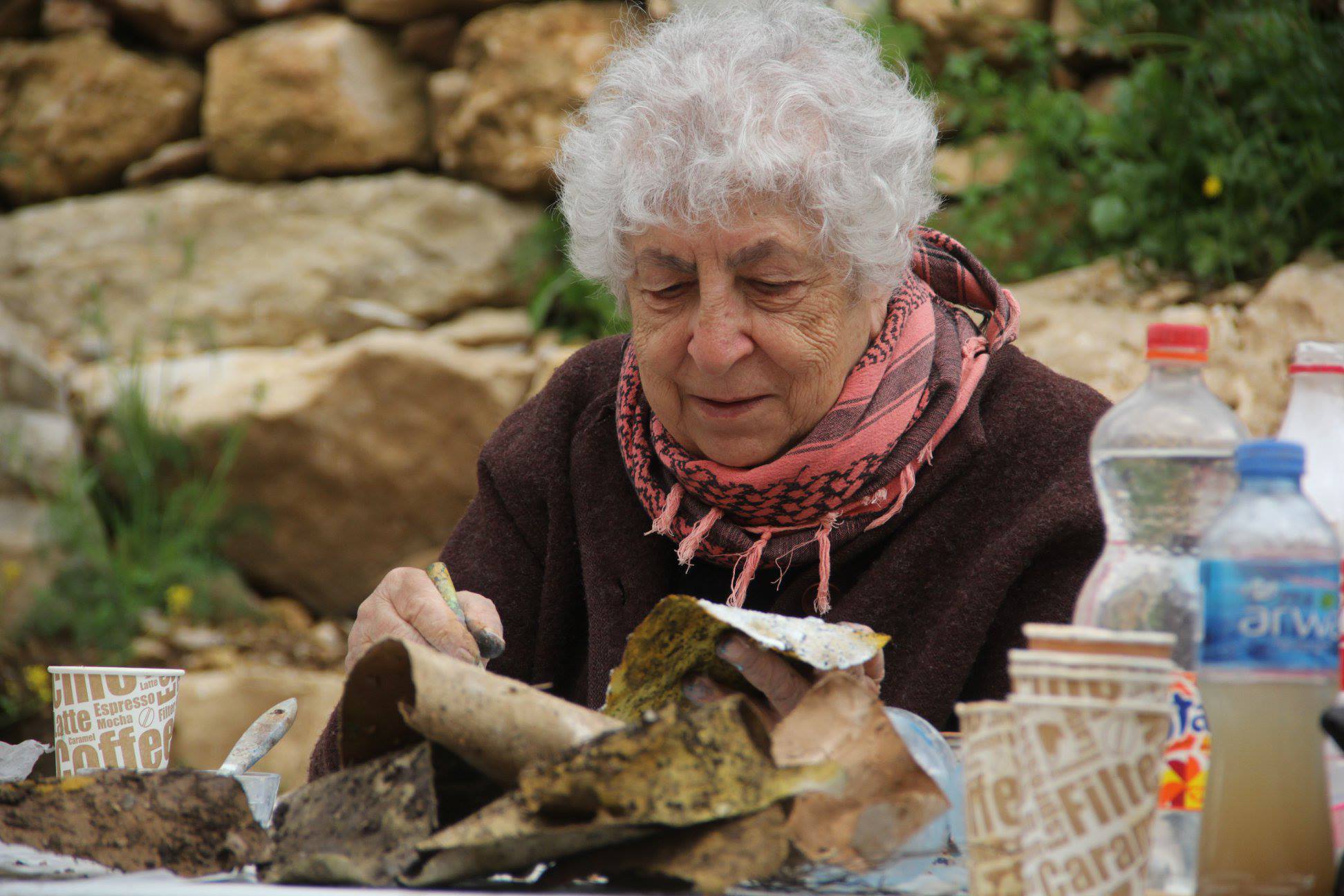

The A.M. Qattan Foundation (AMQF) recently signed four new grant agreements, as part of the second round of “Visual Arts: A Flourishing Field” (VAFF) project, funded by Sweden.
VAFF aims to support and achieve a more sustainable, vibrant and innovative visual arts field in Palestine. It supports organizations in developing their programmes and capacities and creating opportunities to showcase and research visual arts, according to the needs and uniqueness of each organization.
New art labs at Birzeit University and Dar al-Kalima College
Within this framework, AMQF signed a new Grant Implementation Agreement (GIA) with Birzeit University to fund the Faculty of Art, Music and Design. This complemented the contribution the Faculty received from the first round, through which it was equipped with a multi-technology printing lab that included both traditional and more technologically advanced equipment for etching and 3D printing. The lab, which is available in a non-profit context for the first time in Palestine, will benefit various groups, particularly art students, artists, workers and professionals in the field, from both within and outside Birzeit University.
Through the second round, the printing lab will be activated and a number of local artists will be invited to present lectures at the Faculty on several specializations. The Faculty also plans to organize two international artist’s residencies that will enrich academic life, and to increase communications with high schools and enhance community awareness of the Faculty’s visual arts programme and of the visual arts in general. It will also organize a seminar on visual arts education in Palestine, in which all related academic institutions will participate in order to discuss the challenges and horizons for collaboration and development.
Additionally, two exhibitions will be organized: a retrospective exhibition of the late Palestinian artist Tawfiq Abdel Al, entitled “Rhythms of a Different Time”, in collaboration with Birzeit University Museum, and the Degree Show featuring the works of the first graduates of the faculty.
Similarly, the grant agreement signed with Dar al Kalima College in Bethlehem will contribute to the establishment and development of a new educational track specializing in the restoration of artworks as part of the BA in Contemporary Arts programme, in addition to equipping a specialized lab for painting restoration. These programmes will be pursued after the completion of a study surveying the art restoration expertise available within Palestine and beyond, to determine the necessary requirements of the lab. This programme attests to the role the grant can play in enabling educational institutions to develop their study programmes, on the one hand, and playing a larger role in the arts sector and providing it with new expertise and the resources necessary for its development, on the other.
As Nuha Khouri, Vice President for Academic Affairs commented: “This track is a substantial addition to the BA in Contemporary Arts at Dar al Kalima College. It supplies Palestine with specialized artists capable of preserving Palestinian artistic heritage, and reducing the need to rely on foreign expertise to restore Palestinian artworks. Graduates will be able to use the new lab to assist artists in restoring and preserving their works locally. This will also create new job opportunities for fresh graduates and new horizons for cooperation with international universities teaching art restoration, which will enrich academic and artistic exchange between Palestine and the world.”
Through the grant, Dar al Kalima will organise three exhibitions for the art students and a degree show in 2020. The faculty will also be able to support the participation of students in local exhibitions and biennials.
Creating Opportunities for Visual Artists in Gaza
The GIA signed by AMQF with the General Union of Cultural Centres (GUCC) in Gaza aims to support the visual arts programme implemented by the GUCC’s visual arts department, Shababeek for Contemporary Art. The support will go towards production grants and artist residencies, in addition to organizing open studios alongside the residencies programme, and a solo exhibition for each artist participating in the production grants programme.
Fadi Abu Shammaleh, the project director, commented that "the importance of obtaining this scholarship again lies in enhancing the role of artists and enabling them to develop their artistic capabilities and skills through art residencies, grants, contemporary art practices, and contact with the largest possible number of professionals, curators and experienced contemporary artists both within and outside Palestine. In addition, new opportunities will arise for young artists to produce a set of different artworks, exhibitions and connections that will enable them to express themselves and share societal concerns. This will also open up new horizons and space that will empower them to forge their own artistic path and create a local and international audience for them.”
The grant also seeks to design and implement an artistic intervention programme in public spaces. It will also benefit interested artists by organising a monthly programme of encounters and seminars in which different practitioners from across the creative spectrum are hosted, in addition to its support for resource-mobilisation for the union.
The VAFF project, during its first round (2017–2019), provided support to the “Contemporary Linkages” project in response to the needs of the sector's artists through organising a series of theoretical and practical training courses, and implementing knowledge-based programmes. This project, which was completed in cooperation with Arab and international art professionals, provided residencies and production grants to thirteen artists, and was concluded with a large exhibition in which sixty artists from different generations participated and presented various visual art practices.
Projects inspired by the surrounding landscape
VAFF, in its second edition, provided support to Sakiya once again for experimental knowledge production and sharing. Sakiya will contribute to the visual arts scene in Palestine with ten new art projects, three of which will be three artist residencies, and seven others that will draw their themes and media from Sakiya's location in Ain Qinya. These projects will bring together artists, researchers, artisans and/or farmers to produce artistic interventions in different plots around Sakiya’s site, including the road leading to it. In addition, VAFF will be supporting exploration walks that will be organised by Sakiya; these will include four rounds and dialogues on the site that will delve into various topics.
Since its launch, Sakiya has been prominent as a new cultural space that integrates visual art, agriculture and knowledge production, and with a residency programme considered the first of its kind in Palestine that is based on concepts such as experimental research and development. During the first funding session, it completed both the restoration work for the first old house on the site as well as the research and implementation phase of the environmental survey of the land. Sakiya also managed to host 10 local and international artists, including the artist Samia Halabi. Another group participated in the residency programme during the preparation for the closing exhibition. The project concluded with the exhibition "Between the Qaiqab and the Ballut", which attracted 600 people from within and beyond the village of Ein Qinya who roamed between the works displayed in the restored house, and around the site. The exhibition also included a symposium "Rewilding Pedagogy", and spontaneous performances from the villagers.
“Providing opportunities to learn visual arts and supporting artists to produce new artworks, as well as providing space for experimentation and working towards sustainability, and accumulating a greater impact on the Palestinian art scene is what institutions will aim for in the next year and a half. This is where the VAFF project’s objectives meet the needs and aspirations of the visual arts sector in Palestine”, commented Yara Odeh from AMQF, and the manager of the VAFF project, on the signing of the four grant agreements.
Four other Grant Implementation Agreements were also signed in October 2019 – with the Visual Arts Forum (Ramallah), the Khalil Sakakini Culture Centre (Ramallah), the Palestinian Museum (Birzeit) and Dar Qandeel for Arts and Culture (Tulkarem). The combined value of grants allocated to the eight organisations in total amounts to more than 10.8 million Swedish Krona, equivalent to approximately 1,045,000 US dollars. Other grant implementation agreements will be signed with other organisations in the upcoming period.



